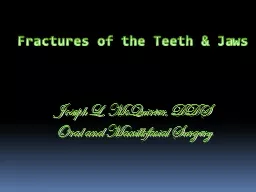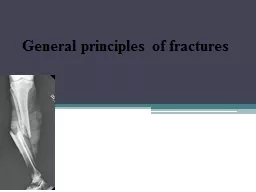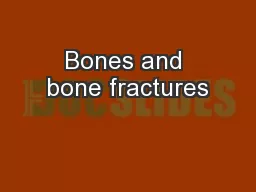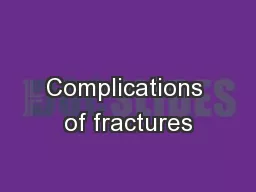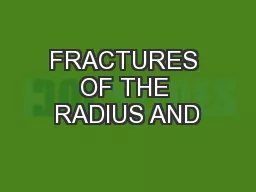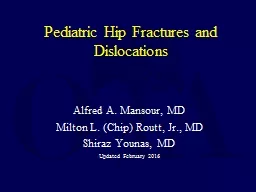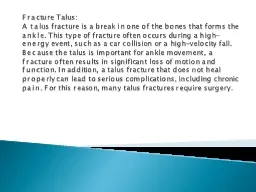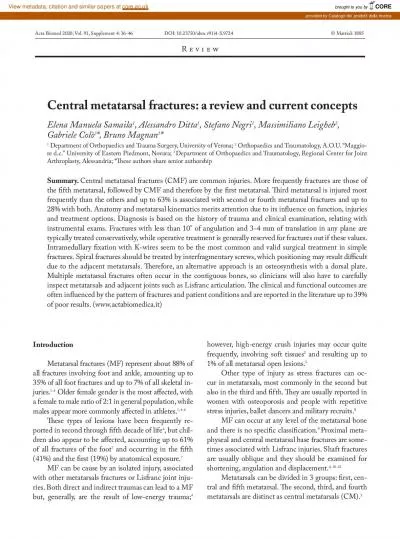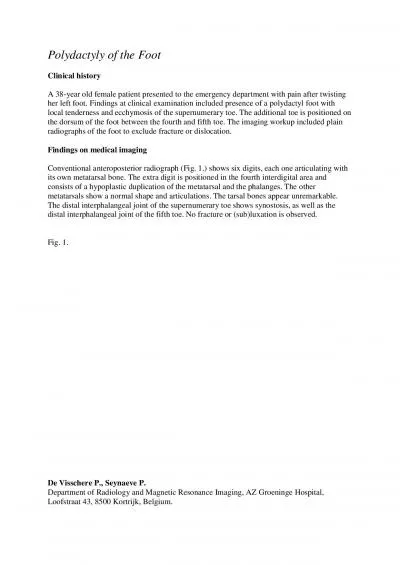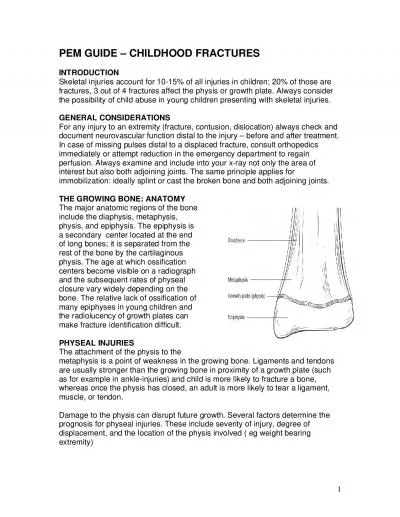PPT-Central Metatarsal Fractures
Author : stefany-barnette | Published Date : 2016-05-30
Dan Preece DPM PGY1 Stress Fx Frequency Distribution second metatarsal 52 third metatarsal 35 first metatarsal 8 fourth and fifth metatarsals 5 shorter
Presentation Embed Code
Download Presentation
Download Presentation The PPT/PDF document "Central Metatarsal Fractures" is the property of its rightful owner. Permission is granted to download and print the materials on this website for personal, non-commercial use only, and to display it on your personal computer provided you do not modify the materials and that you retain all copyright notices contained in the materials. By downloading content from our website, you accept the terms of this agreement.
Central Metatarsal Fractures: Transcript
Download Rules Of Document
"Central Metatarsal Fractures"The content belongs to its owner. You may download and print it for personal use, without modification, and keep all copyright notices. By downloading, you agree to these terms.
Related Documents


